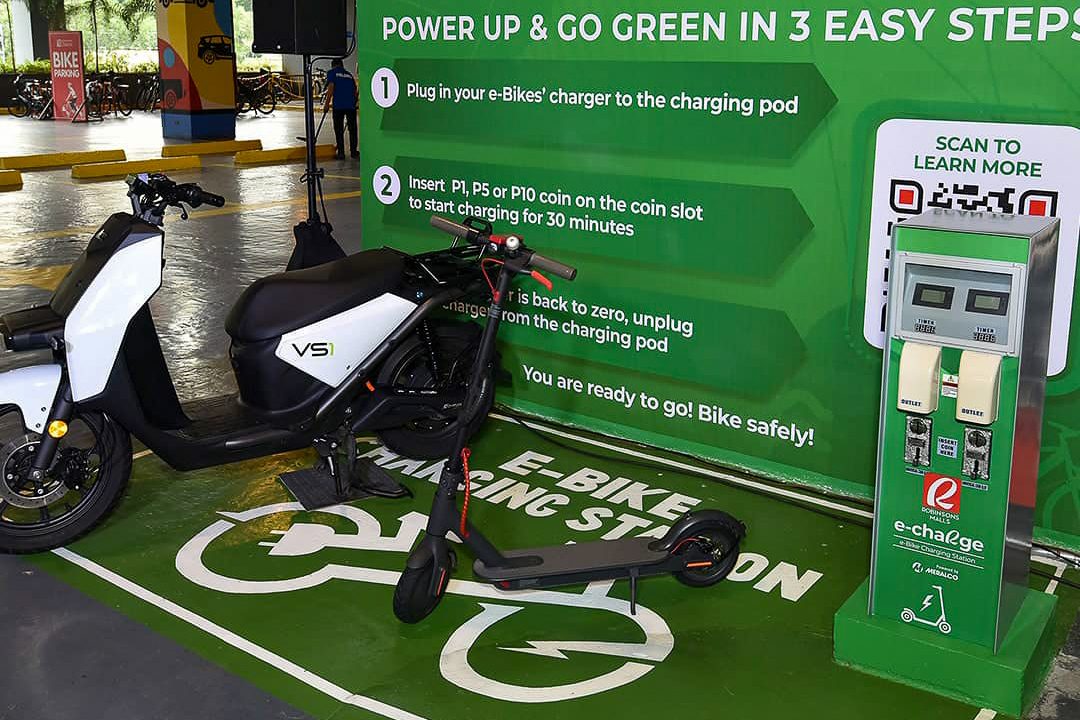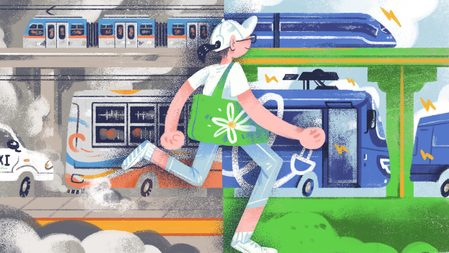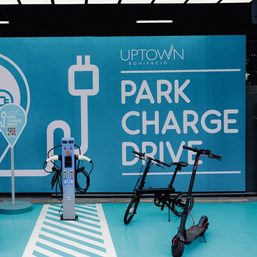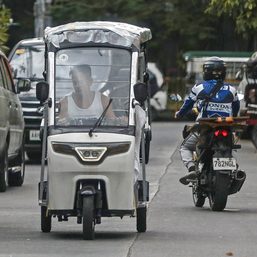SUMMARY
This is AI generated summarization, which may have errors. For context, always refer to the full article.

MANILA, Philippines – While the Public Utility Vehicle Modernization Program (PUVMP) of the government seeks to replace smoke-belching jeepneys with vehicles using cleaner diesel fuel, a long-time jeepney manufacturer proposes to go the extra mile: go full electric.
“If your goal is to help mitigate climate change, the way to go is to go full electric,” Elmer Francisco, CEO of Francisco Motors, told Rappler in an interview.
Francisco Motors has been in the business for 77 years. Since they started in 1947, Francisco Motors relied on Japan-based companies Isuzu and Mazda for the internal combustion engines of their jeepneys.
Francisco said they have resolved not to buy engines from foreign manufacturers anymore. “We will build our own. What we’ll do is full electric.”
They are set to release 1,000 units of their electric jeep by the second quarter of 2024. This jeep is pegged at P985,000 – a bit more expensive than new traditional ones that range from P675,000 to P850,000 but less than the average P2 million cost of other modern jeepneys.
Making public transport, one of the biggest polluting sectors in the Philippines, cleaner is part of the country’s plan to reduce greenhouse gas emissions that exacerbate climate change. The PUVMP is the government’s effort at nationwide transformation of land-based public transport. It requires utility vehicles with at least Euro-4 engines, which run on diesel with less sulfur content.
But Euro-4 is already obsolete in other advanced countries, said Francisco. “They’re throwing their garbage at us and monetizing it at high cost.”
Creating an electric fleet
According to Francisco, his company was able to make an electric jeepney much cheaper than the imported modern jeepney units because most of the parts are locally manufactured, including the battery.
The company is building a factory in a special economic zone in Camarines Norte, powered by a 100-megawatt solar farm, where production of electric jeepneys will take place. Once built, it is projected to produce 25,000 units per year.
Francisco Motors will make use of the incentives under the Electric Vehicle Industry Development Act (EVIDA). This includes duty-free importation of materials needed for the production of batteries and assembly of electric vehicles.
When the batteries of their electric jeepneys die, they will be stored in the special economic zone to be repurposed for second life applications.
Unlike most of the vehicles of the other PUVMP players, which are actually mini-buses, Francisco Motors’ electric jeep retains the iconic look of the “King of the Road.” It is also exploring other designs and looking at lighter materials like aluminum.
While a more aerodynamic design is more fuel efficient for other modes of transport, Francisco said it makes more sense to prioritize making jeepneys lighter because it is a slow-moving vehicle.
Lightweight electric vehicles are more economic as they use smaller batteries and have longer driving range.

What’s stopping us?
If a local manufacturer can produce a full electric jeep, what’s stopping the Philippines from adopting this technology instead of settling for mostly Euro-4 compliant vehicles?
Aside from high upfront costs, the infrastructure that supports electric public transport is still lacking.
Currently, electric vehicles have limited driving range because there are only a few charging stations in the Philippines. In contrast, some countries in Europe are already experimenting with electric roads, which enable vehicles to charge while driving.
Battery swapping stations, the alternative to charging stations, are just beginning to be rolled out in parts of Metro Manila. (LOOK: Gogoro Smartscooters, battery-swapping tech arrive in the Philippines)
“If all our PUVs will be electric vehicles, I think we also need to implement large-scale charging stations,” transport expert Sandy Mae Gaspay of the University of the Philippines Institute of Civil Engineering, told Rappler. “Right now, operators just have their own charging or battery-swapping stations.”
The Philippines is also still catching up with policies to support its nascent electric vehicle industry.
“EVIDA [Electric Vehicle Industry Development Act] was just recently passed,” said Gaspay. “We’re just starting to lay down the foundations of an EV market.”
The use of electric vehicles isn’t completely clean as long as the country’s power is still primarily generated from coal. As of 2022, coal makes up 42% of the Philippines’ energy mix.

Cost-benefit analysis
But even with these challenges, it still makes economic sense to adopt electric jeepneys in the country.
A study submitted to the Department of Trade and Industry in 2019 conducted a cost-benefit analysis of the transition to electric jeeps in a period of 10 years.
Authored by energy economist Majah Leah Ravago and researchers Renzi Frias and J. Kathleen Magadia, the study explored different scenarios on adopting electric jeeps.
It looked into the use of electric jeeps in the context of the current coal-dominated energy mix, and in the foreseeable future of improved technology and batteries, as well as transitioning to renewable energy and solar-powered charging stations.
The cost-benefit analysis took into account fuel and power, operations and maintenance, carbon and health costs, charging station cost, government subsidy, among others.
In all scenarios, the study found that benefits trump the costs. “[W]hile the upfront costs of e-jeepneys are high, the socio-economic benefits of replacing conventional jeepneys with e-jeepneys outweigh the costs,” the study read.
As lithium batteries become cheaper, prices of electric jeepneys decrease. Combined with the transition to cleaner energy, electric jeeps would significantly decrease health risks to the public and reduce carbon emissions.
Beyond tech: System change
Modernization should go beyond changing vehicles, said Gaspay. The program should be systemwide to make transport cleaner but also more efficient and comfortable for the riding public.
“I don’t think we’re ready, if you consult energy experts,” Gaspay said on the question of whether all PUV fleets can be electrified anytime soon.
“There are still a lot of things to fix. What’s important to understand is that solutions should be systemwide.”
Gaspay said the modernization program should transform routes and modes of transport based on volume and frequency of passengers. Making systemic changes should also include how fares are collected and where stops are located.

Even the PUV consolidation can help with fleet management, as joint operations would help operators and drivers enjoy economies of scale.
Gaspay used the example of having one mechanic for the whole fleet which allows for frequent and cheaper maintenance compared to that of a single-unit operator.
Local government units must also play an active role in monitoring competition among modes of transport and giving the support they need. (READ: Why some transport groups support jeepney modernization)
Gaspay also noted that the transition to modern utility vehicles also means helping operators get rid of old units. The Philippine government is currently providing equity subsidies for operators who will modernize, but jeepney drivers and operators say the subsidies are too small. – Rappler.com
Quotes were translated to English for brevity.
1 comment
How does this make you feel?






Going electric will not solve the problems of public transport. It will open a host of other problems, foremost is the lack of electric charging infrastructure. More expensive maintenance costs for the vehicles, and financing problems. Going “green” is a misnomer as disposal and waste materials from electric tech are still wanting.